EBR charges a service fee to manufacturers to produce ebike reviews and videos, this began in 2018. It’s the same flat fee for each bike, and it helps us to keep the site going while limiting ad clutter. We appreciate the opportunity to serve you with our opinions and data but respect your right to know that we receive compensation :)
The Raleigh Venture iE is an Class 1 Pedal Assist, cruiser-style electric bike. It offers an upright body position, comes with oversized saddle with rubber bumpers for support and comfort, and swept back bars with padded grips so you don’t have to lean forward as much. This model is similar to the IZIP E3 Vida, which has adjustable angle stem that would sometimes loosen, so the Raleigh’s rigid stem is a nice choice. The oversized saddle is set on a 30.9 mm seatpost with a rubberized seat clamp that requires less effort to adjust than some of the standard hardware I’ve seen. This bike is very lightweight for a cruiser at round 47 pounds total. This is partially due to its lack of suspension, fenders, or rear rack, although there are mounting points if you want to add fenders or a rack post purchase. Its design overall is best suited for relaxed riding around neighborhoods and towns, as seen by its approachable structure, good weight distribution, and low standover height. One can hop on very quickly, although the battery pack must be minded or it could get kicked and scuffed over time. The bike comes in three frame sizes and two colors, aqua blue and black, which adds a nice choice element for his and hers or family situations where variety could be welcome. The stem is upright with five spacers underneath, and it holds up a mid-rise bar that sweeps back, as mentioned earlier. It has a quality choice of tires–high volume Schwalbe Super Moto-X, with a PSI rating of 30-55; they are 27.5 inches in diameter and 2.4 inches in width. The tires add to its comfortable nature, and the lower attack angle of 26-inch wheels allows it to run easily over pebbles and potholes in roads. The frame was built with sturdy aluminum alloy tubing and features large heavy-duty welds with additional gusset plating in areas. While some step-thru cruiser e-bikestend to feel flexy, this bike feels very solid, so no concerns there. Favorably, the bike comes in 3 frame sizes, so the rider can choose whichever frame best suits their needs.
The Raleigh Vanture iE comes with hydraulic disk brakes, Tektro Auriga WS, that require minimal hand strength and offer adjustable reach. The brakes use 160 mm front and rear rotors which I’d consider decent for a neighborhood bike. It has a premium drive system from Bosch. The motor, the Bosch Active Line Plus, weighs just 6.3 lbs. Although it’s cheaper and more compact than their Performance Line motors, I still found it very powerful and able to climb well… as long as I shifted down to the lower gears. While the motor does not supply as much torque as the Performance Line motor; it goes up to 40 Newton meters of torque, and 100 RPM (rotations per minute) vs. 75 Nm and 120 RPM, it does pedal without any gear resistance. That makes the Raleigh Venture iE more efficient if you turn the motor off or attempt to pedal beyond the 20 mph top assisted speed. Considering the casual riding this bike is designed for, the efficient Active Line motor is a great fit because it keeps the price down while still providing features like shift detection to protect the drivetrain. The bike comes with a 1×9 Shimano Alivio Derailleur, Shimano HG Cassette with 9 speeds, great for varied urban terrain. The chain is equipped with an alloy guard, which helps keep pants or dresses from touching it. The cranks are standard. As a whole, gear shifting operates very smoothly. The pedals (Wellgo R1 99) could be wider and more sturdy; the steel cage design can get scratched and bent in if the bike tips. My personal favorite pedal option are Wellgo BMX pedals but some riders might want rubberized pedals to reduce the potential for shin scraping. The stock R1 99’s have reflectors and are lightweight, so the work well enough. A particularly nice feature is that the motor measures rear wheel speed, pedal cadence and pedal torque 1000 times per second. So if it were to sense a change in tension, it tries to ease out to prevent the chain, sprockets, etc. from being damaged–a smart, efficient system. This bike’s motor is also one of the quietest of mid-drive motors I’ve encountered. It does lack a throttle, unlike most cruiser ebikes, but the tradeoff is an efficient, well-balanced system, that can offer good range.
The Raleigh Venture iE comes equipped with a battery mounted vertically in front of the seat tube–a different and cleverer design than the rear-rack and downtube mounted batteries I have seen more often, which tend to compromise balance. Ideally, you want as much weight low and center on the frame as possible. The battery you get is a Bosch Power Pack 400, a slightly smaller and more affordable product than the high-end Bosch PowerPack 500. The battery weighs roughly 5.5 pounds, offers 36 volts and 11 amp-hours of capacity. It is small, but very effective… and the casing design and mount interface is forward compatible to the larger 500 watt battery pack, in case you want to borrow, rent, or buy one in the future. With the smaller battery pack, this electric bicycle also comes with a compact 2 amp, 1.3 lb charger. Bosch sells a faster 4 amp charger for those who want to minimize downtime. Practically, this battery is very convenient. It can be charged on/off the bike and it uses the same charging interface as the mount pad on the bike. This means you don’t have to use an adapter and keep track of additional parts like some other products. The battery is easy to remove, just insert and twist the key then pull out and up using the molded plastic handle. An LED charge level indicator is built into the battery pack which lights up with small green lights (even when it is detached from the bike) so you know whether it’s time to charge again. Visually, the battery comes with nice brown decals that match the saddle, grips, and blend with the bike’s overall aesthetic. Overall, this battery is quite reliable and durable. To help maximize its lifespan, store in a cool dry location and avoid letting it discharge below 20%, as this can stress the lithium-ion battery chemistry.
Activating the drive systems on this ebike is fairly straightforward. You charge and mount the battery then press the power button on the top edge of the little display panel, which is mounted within reach of the left grip. This is the Bosch Purion display, one of the nicer compact offerings on the market right now. It cannot be swiveled to reduce glare easily, is not removable for protection, does not show as many menus, and does not have an active Micro-USB charging port like the larger Bosch Intuvia display. However, it does keep the handlebars open for adding a GPS phone mount or cup holder, and may not get damaged as easily if the bike tips or is parked at a crowded rack. This is a very popular display panel for electric mountain bikes, which often strive for stealthiness to fly “below the radar” visually. I have grown to accept the Purion, but do have a few tips for use… The + and – button pads, which raise and lower assistance, are designed to click in at an angle. They are attached near the left edge of the control pad and pivot in towards the LCD. With practice, I’ve found that the right edge is really the sweet spot and I’ve noticed that sometimes the lower left and middle can be inconsistent. The screen itself glows faint white at all times, which shouldn’t draw much power, and is handy when it’s early morning or later at night and you need to read it. Once you get the hang of things, you really don’t have to look down at all, because you can feel and hear the clicks of the button pad. Holding the + button will turn lights on and off if you have a shop wire them in. This will of course cost extra, but it’s nice to know that it’s possible and fairly easy to do (from what I’m told by many electric bike shops around the US). Without a rack, fenders, or lights by default… this bike is clean and sturdy, but it’s nice to know that it’s so open to being upgraded. Holding the minus button will cycle through trip distance, odometer, assist level, and range. And, the range menu is dynamic, so you can see the bike calculate how far it thinks you can go before the battery completely drains based on the last mile of riding, your current state of charge, and the chosen level of assist. This helps to make up for the very basic 5-bar charge indicator on the left side of the battery and the display, which isn’t as precise as a 10-bar or percentage readout seen on some competing displays. On the lower edge of the control pad is a walk-mode button. Press it once and then hold the + button to have the motor slowly assist you when walking the bike (you must be in Eco, Tour, Sport, or Boost for walk mode to work). It’s useful for crowded non-bikeable areas, or if you get a flat tire, and not all companies have it enabled, so props to Raleigh. Changing flats is easier with the quick release wheels and the premium Schwalbe Super Moto-X tires have GreenGuard puncture protection to help minimize cuts and thorns.
Overall, this is a very unique and special cruiser bike because of the mid-motor and battery position. The price of $2.5k is pretty good considering the vast dealer network, where you can test ride and get fitted, and the two-year comprehensive warranty. This a smart, well-designed bike with some updated features, such as its hydraulic disk brakes and Bosch drive system. Its design is sturdy, stable, and very comfortable; there was no wobbling riding it… which sometimes happens on wave-style step thru models. It excels most in its weight distribution, making it light and approachable, perfect for riding casually around town. In the past, some Raleigh electric bikes used cheaper drive systems that weren’t as sophisticated and natural feeling. This one activates smoothly, always feels controlled, and has the potential to get riders who might have struggled with wind and hills, back onto the saddle for some fun exercise. Big thanks to Raleigh for partnering with me on this review and providing several models to test back to back, it helped me zero-in on what makes the Venture iE unique in the line. I welcome questions and comments below as well as the Raleigh Electric forums.
Pros:
- The deep step-thru frame is approachable, sturdy (reinforced with alloy gussets near the head tube and seat tube), and available in three sizes for optimal fit
- Most of the cruiser style electric bikes I have seen use a rear rack mounted battery (which can feel unbalanced and contribute to frame flex) or a downtube mounted battery (which can raise the standover height and get kicked), so I like that Raleigh went with something a little bit different here, mounting the battery vertically in front of the seat tube to keep it low and center but still balanced and out of the way (just be careful when unlocking and removing it because it seems like it could tip forward and fall off more easily)
- I was surprised that the Venture iE only weighs ~47 lbs because most cruisers are 50+, this is probably a result of using the lightweight Bosch Active Line Plus motor and smaller Powerpack 400 battery, and having no suspension, fenders, or rear rack included… but it does have mounting points for fenders if you wanted to add some
- The bike is fairly comfortable to ride because of the upright body position, oversized saddle with rubber bumpers, swept back bars with padded grips, and high-volume Schwalbe Super Moto-X tires! Great choice from Raleigh here, the tires are high quality and offer a unique 27.5″ x 2.4″ size vs. 26″ x 1.95″ on many of the older models
- The larger wheel size of 27.5″ provides a lower attack angle so you don’t feel bumps and cracks as much, the wide pressure range of the tires, 30 to 55 psi, means that you can ride more comfortably if you are willing to sacrifice some rolling efficiency (which isn’t as big of a big deal on an electric bicycle)
- Great aesthetics here, I love the two color choices (aqua or black) and appreciate that the paint extends from the frame through the fork and saddle, the grips, saddle, and battery stickers all match beautifully and that helps it to not look so much like an electric bike, note also that the spokes, hubs, bars, and other minor hardware pieces are black vs. a mix of silver and black
- The Bosch Active Line Plus motor is known for being lightweight, quiet, efficient, and easy to pedal unpowered because it uses a standard sized chainring without reduction
- Great kickstand choice and placement, I like the chainring protector (because it will keep your pant legs or dress ends from snagging and reduce chain drops), and the rigid stem provides good positioning and strength here vs. an adjustable angle stem… it’s a personal preference with the stem, but this part won’t come loose as easily and still offers good rise and positioning with the five spacers
- Both wheels offer quick release and I was very impressed with the thicker 12 mm thru-axle at the rear (vs. a standard 9 mm axle and skewer), it should further reduce flex and provide support for the larger tires
- This bike coasts efficiently and balances well because of the wider tires and relaxed geometry, I didn’t detect any speed wobble and was able to ride with no hands easily
- Cables are internally routed to look clean and stay out of the way, most of the weight is positioned low and center for optimal handling
- Bosch has been expanding their motor offerings and the Active Line Plus is meant to be smaller and cheaper but it is still very powerful and climbed well for me
- The price is reasonable considering that the bike has hydraulic disc brakes and a Bosch drive system with shift detection, great Shimano Alivio 9-speed drivetrain and is sold through a network of dealers with good support and warranty
- Hydraulic disc brakes tend to require less hand strength to operate, are easier to adjust (in terms of hand reach on the brake levers), and are more consistent than mechanical brakes which stretch over time
- Durable and reliable battery, I like that the pack has a big handle built in on the top and that it comes with a lightweight and compact 1.3 amp charger with a durable proprietary plug end
- Minor thing here, I appreciate the large rubberized quick release lever that makes adjusting saddle height easier
- Bosch PowerPack batteries are interchangeable so you could borrow or rent a 500 watt pack to go further, this is one of the most common battery packs globally and that makes it easier to replace
- I’ve been told by many ebike dealers that it is possible to wire in 6 volt lights that will run off of the Bosch drive system, that’s a nice upgrade for people who ride in the dark or simply want to stand out more to traffic (hold the + button to activate lights if you add them)
Cons:
- Minor complaint, there are no bottle cage bosses on this e-bike, there is room on the downtube but perhaps that would reduce frame strength and be in the way when mounting (could get kicked when stepping over)
- I didn’t see a slap guard on the right chain stay so you could end up with some chipping over time if you ride across bumpy terrain, consider a clear piece of box tape or an aftermarket slap guard protector
- The Active Line Cruise motor offers a bit lower torque than the Performance Line products and has a limited 100 RPM pedal rate top speed vs. 120 RPM so you have to switch gears a bit more frequently to go faster vs. pedaling faster, it offers up to 40 Nm of torque vs. 75 on the highest torque Bosch motor
- The Bosch Purion display panel isn’t removable and doesn’t have an active Micro-USB port built-in like the Bosch Intuvia displays, I also found that sometimes the buttons aren’t as easy to push because they pivot inwards (towards the screen) vs. straight down
- The all-aluminum frame is lightweight but doesn’t offer the same vibration dampening properties as steel or carbon fiber, since there’s no suspension that comes stock, I’d probably consider a cheap suspension seat post like this to smooth out bumpy rides
- Many electric cruisers offer trigger or twist throttles to help get moving from standstill, it makes them Class 2 (which isn’t allowed as many places), and can expend the battery capacity more quickly but is nice to have if you want to take a break from pedaling
- Minor gripe, the Wellgo cage pedals are pretty basic and don’t offer as large of surface area or good of grip as something like these Wellgo BMX pedals that are pretty affordable… I’d definitely swap them out for myself if getting this bike
- Minor gripe, Bosch does offer a faster four amp charger that would fill the battery pack faster… but it weights a bit more, is physically larger, and adds to the price of the bike, I feel that the two amp charger included with the 2018 Raleigh Venture iE is a good fit for the smaller PowerPack 400 battery, do be careful when charging the pack while mounted to the bike because the plug port is very close to the right crank arm and could get bumped
- Even though the display cannot be removed and may be a little small for people with limited eyesight, it’s intuitive enough that you can kind of guess what’s going on without looking down and those who want the larger Intuvia display can pay an electric bike shop to install the upgrade
Resources:
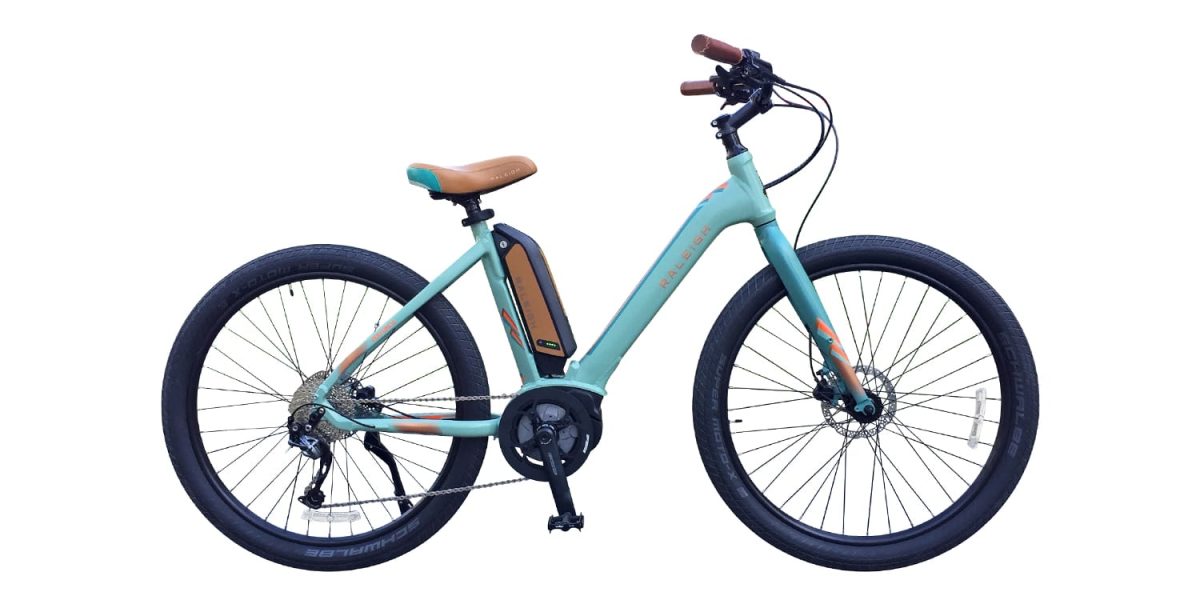










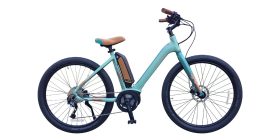
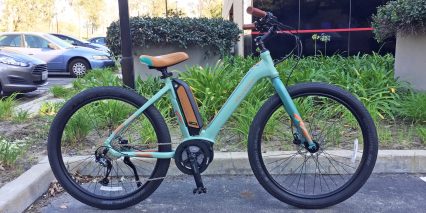
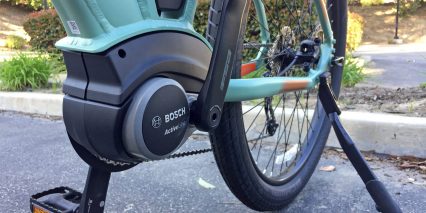
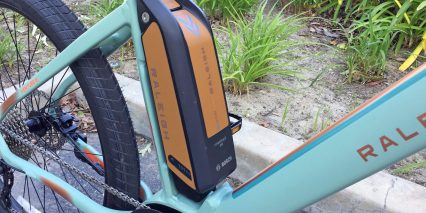
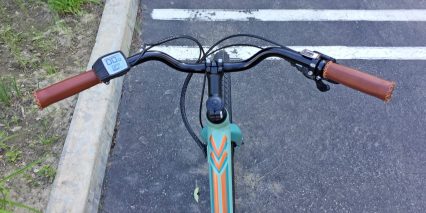
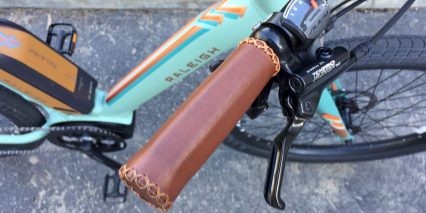
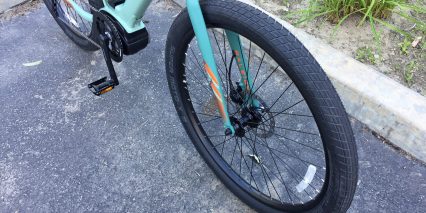
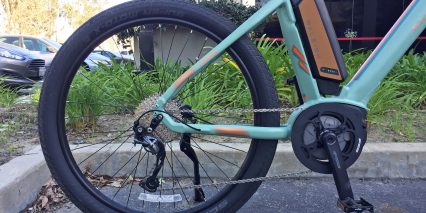
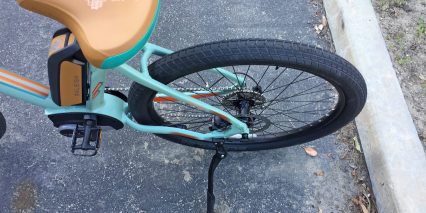
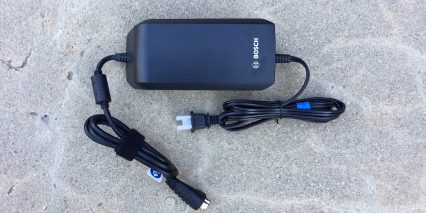
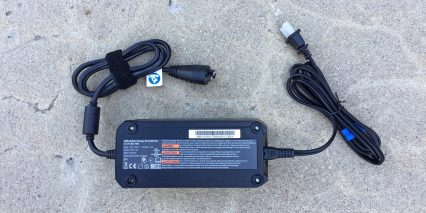

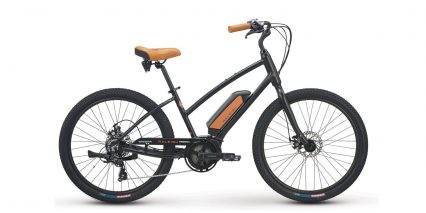
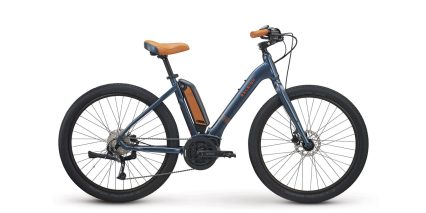
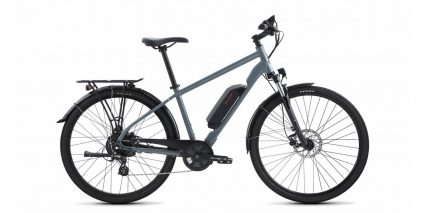
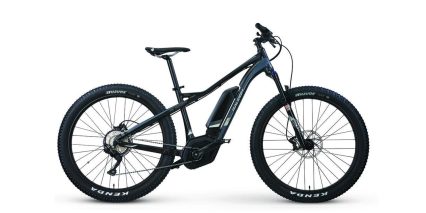
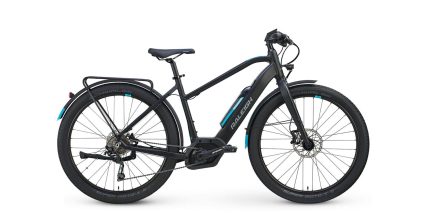
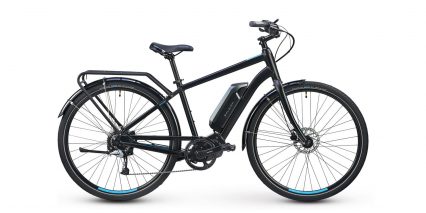
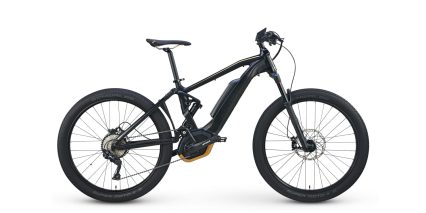
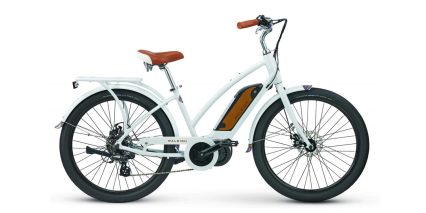
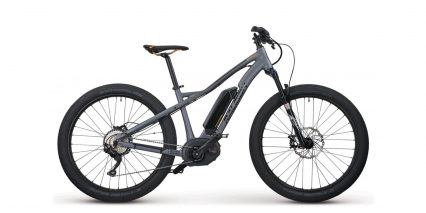
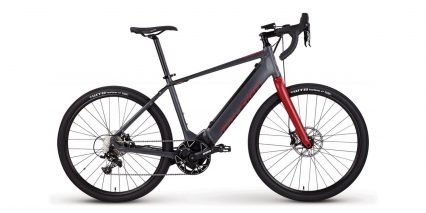
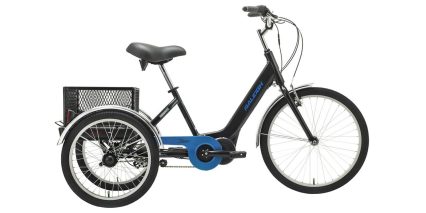
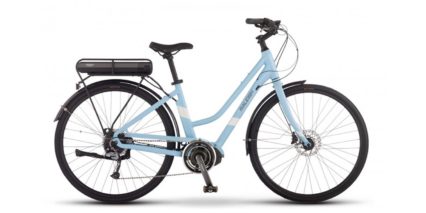
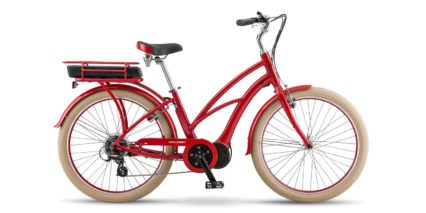
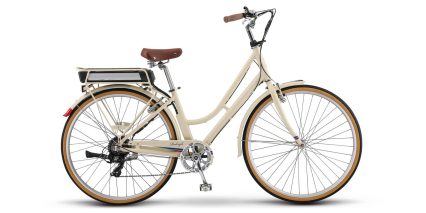
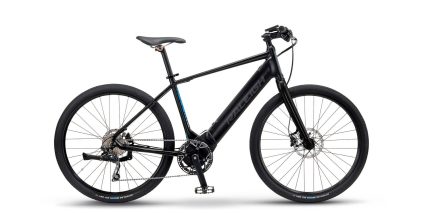
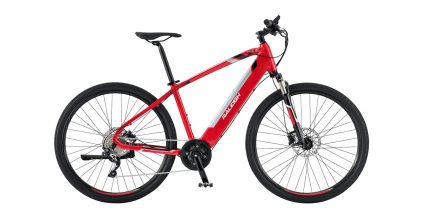
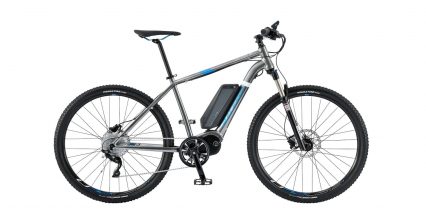
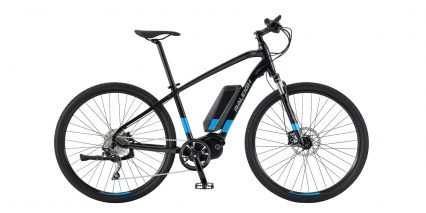
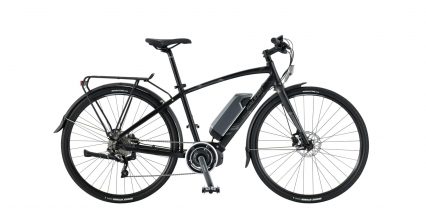
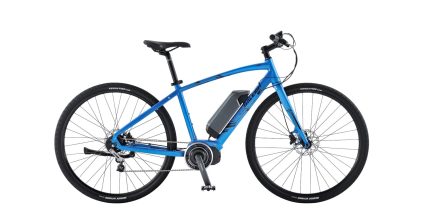
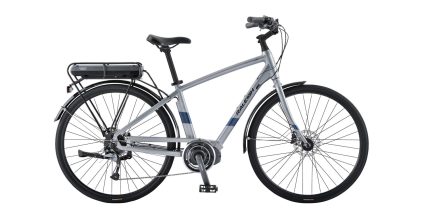
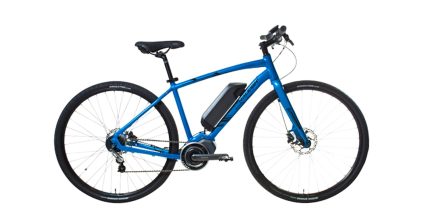
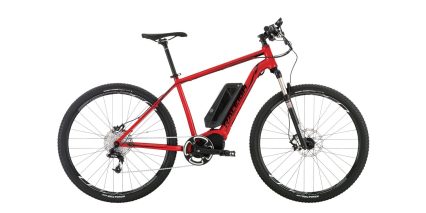
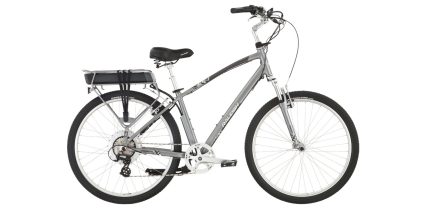
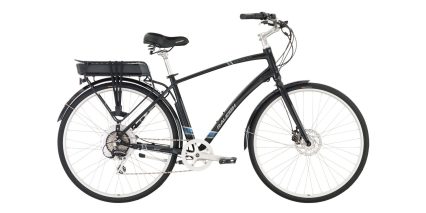
Mike R
7 years agoNot sure why you always call charging at normal rates (2 amps) a ‘con.’
Fast charging requires two things for it not to kill off the battery sooner 1) a battery that is designed for it, and 2) a charger that will only charge the battery at a faster rate from 0% to 50%, before slowing down. This is called a step charger, and to my knowledge none of the ‘fast’ chargers for e-bikes are designed like that unless you order an expensive one that monitors the condition of the battery.
Otherwise if you fast charge the battery all the way, it stresses the battery and results in shorter overall battery life. The ironic part of buying a special charger (often as much as $300), is you can nearly buy a battery for that amount. Slow (2a) charging also reduces risk of battery fires, or explosions. With li batteries, I call it “Keep it simple, and Keep it SAFE!”
A more sensible approach – charge the battery at night, under a normal (2A) charge rate. Ebike is ready to use next day. If you REALLY need to have more range right away, then carry a spare battery to eliminate the need for so called ‘fast charging.’ The xtra weight of a 2nd battery, is mitigated by the power assist anyway.
P.S. most laptops have nearly always used step charging, where the battery charges faster for the first 50%, and then slows for the remaining charge.
Replycourt
7 years agoThis is great feedback, Mike! Thanks for taking the time to share these details, I’ll keep this in mind with future reviews but have filmed ahead quite a bit so you may hear similar feedback for a while :)
Reply